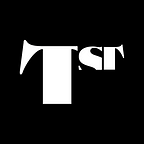Drag transformations that explore gender and femininity
In Vancouver’s underground performance community, several new performers are making a difference in the way drag is looked at. Now, the drag scene is starting to see a lot more variety in gender transformation, with drag artists exploring gender in a much less obvious form.
More femininity should be explored
Molly Sjerdal, also known as Grimm, is a drag artist who believes that drag should represent more than just a thin, male body form in a dress. He believes that there should be more femininity explored in the scene, and is a major performer at Vancouver’s Man Up Club Amateur Hour. And his performances have connected with people who feel the same, as he won the Amateur Hour competition in 2016, and then went on to win the coveted title of Mr. Cobalt in the same year.
Drag in Vancouver is a big underground scene, that attracts all kinds of people from all walks of life, from people looking to see male-female transformations to those who want to explore other kinds of transformations as well. Drag has become a way for many feminine-identifying people to explore what it means to be feminine. In the patriarchal society of the age, femininity is no longer valued in men, and many drag artists want to point out how feminine a non-masculine identifying male can be.
Drag has many different versions
Drag can be looked at in many ways and has both binary and non-binary attributes. Binary drag is where the person transforms into a male or female, from their normal gender. Non-binary drag is where the genders are mixed up and represent both genders in the one form by a single person — like dressing in feminine clothing, and then putting on a beard.
Male drag requires them to make a physical transformation just as much as female drag. Binding to make the classic, V-shaped torso, packing to enhance the groin area, and stance are all important aspects of male drag. The movements, speech, and gestures are all exaggerated to be more masculine. Female drag requires the same transformations, and the movements are more dainty, more flowing, and much more feminine. Everything, in both roles, is massively accentuated to make it more recognizable on stage.
Drag is moving slowly into the burlesque scene
And there are other drag artists who have different forms of drag. For Ady McLeod or Ruby Slickeur as she is known on stage, drag and gender performance has become part of her burlesque routine. And with the burlesque scene not being into “queerness” as Ruby says, it was tough to add it to her performance. Her performances take drag to a different level, with the inclusion of her burlesque and some clowning elements, her experience has been very different than others.
One of the biggest differences between burlesque performers like Ruby, and those who explore drag in other ways, like Grimm, is the way in which they portray their femininity. Ruby also includes female nudity in her performances at Man Up, which many people outside that club frown upon in drag. In many gay male-dominated clubs, female nudity and the female body is not accepted easily.
h/t: Westender
